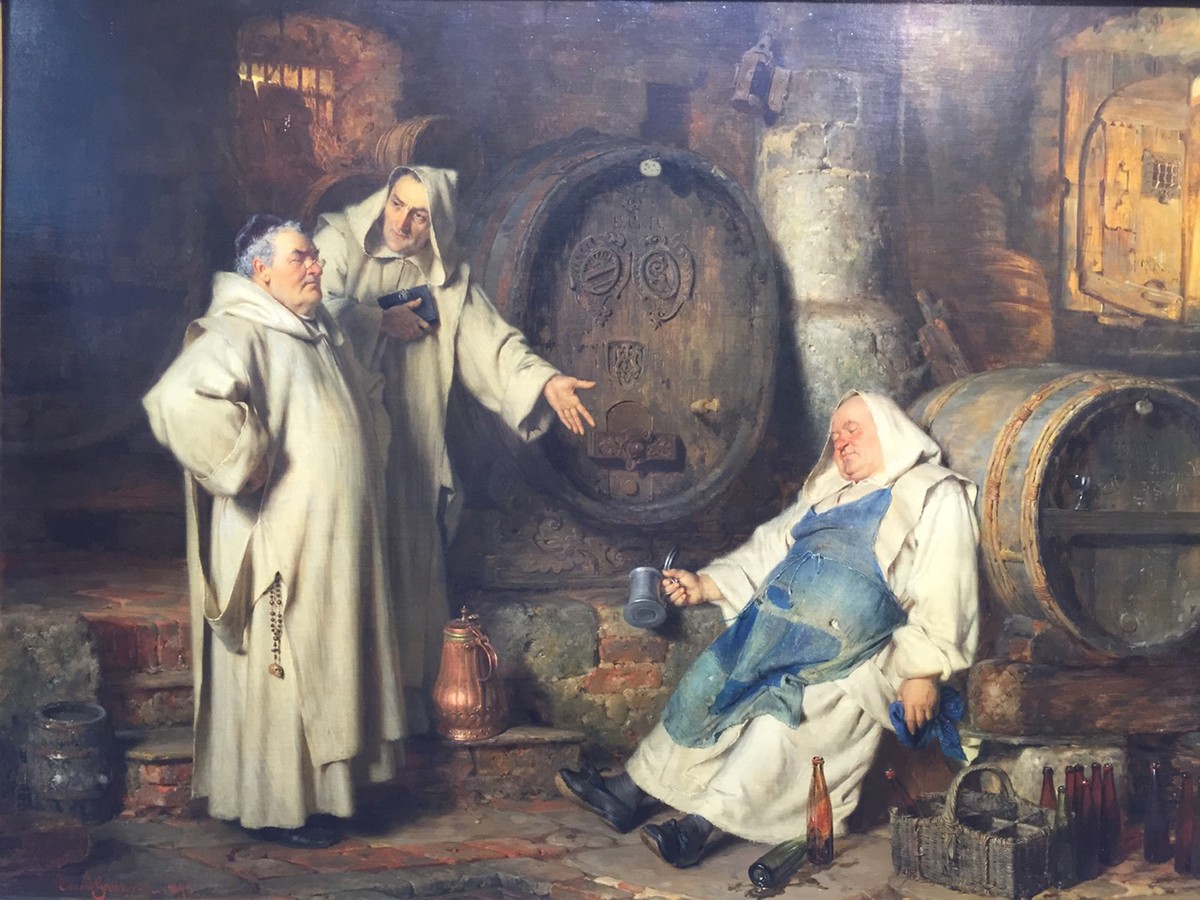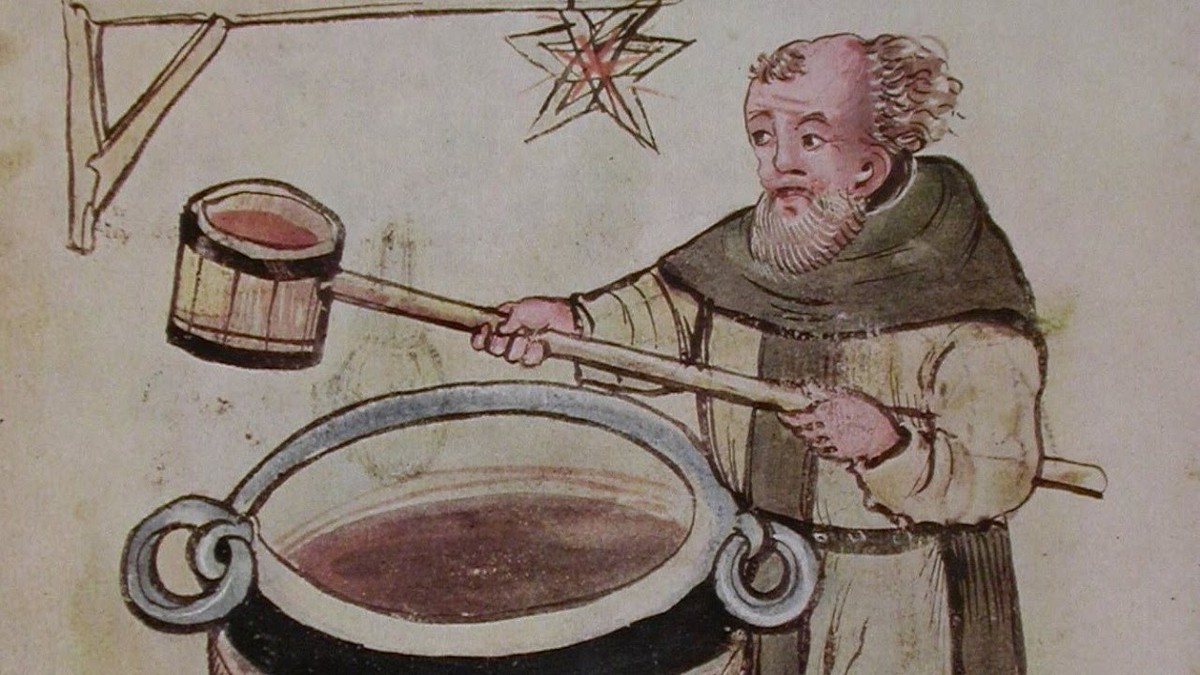A Monk's Better Idea That Built Europe's Beer Empire
One day a medieval monk looked at the water from the well, and with a wry smile said, "there is a better idea," and decided to brew beer. Thus began one of the most successful business stories of the Middle Ages. In the twelfth century, the street was an open toilet. In the river floated everything except the meaning of life. Drinking such water meant signing up for the dysentery express. Boiled water with barley and hops gave a real chance to reach the evening prayer without the urge to visit the nearest bushes. Plus the Great Lent, when forty days had to be endured without meat, but the liquid was not forbidden. Monks brewed beer not in a basement on their knees, but in dedicated breweries—solid buildings with equipment. They had access to resources: land to grow barley and hops, water from clean springs, firewood for boiling. Peasants could not afford such. The process was simple in outline—malting, mashing, boiling, fermentation, and maturation—but it demanded knowledge, experience and resources.

In This Article:
- From Open Streets to Purpose-Built Breweries
- From Gruit to Hops The Rise of Bitterness and Preservation
- Fermentation and Temperature Control
- Aged in Barrels A Variety for Every Palate
- From Craft to Commerce Monasteries Across Europe
- Branding and Rivalry The First European Beer Brand System
- Purity Law Clash Reform and the Catholic Resilience
- Legacy of Pragmatism A Thousand-Year Industry
From Open Streets to Purpose-Built Breweries
In the twelfth century, streets were effectively open sewers; the river carried everything except the meaning of life. Drinking such water meant signing up for the dysentery express. Boiled water with barley and hops gave monks a real chance to reach the evening prayer without the urge to visit the nearest bushes. Plus the Great Lent, when forty days one had to do without meat, but beer was not forbidden. Monks brewed beer not in a basement on their knees, but in dedicated breweries—solid buildings with equipment. They had access to resources: land to grow barley and hops, water from clean springs, firewood for boiling. Peasants could not afford such. Sowing, sprouting, drying—the malting that powered the beer. Sprouted grain is called malt, and it holds more sugar that later becomes alcohol. The monks knew the optimal time to sprout and the right drying temperature. It required experience and precision—one mistake, and instead of beer you’d get a murky slurry. Mashing. The malt was milled and mixed with hot water. The sugars moved into the liquid, forming wort. Temperature was controlled by hand—too hot and the enzymes died; too cold and the sugar wouldn’t dissolve. The monks kept records and passed knowledge from generation to generation, ensuring consistency across batches.

From Gruit to Hops The Rise of Bitterness and Preservation
Until the twelfth century, beer was usually brewed without hops, using herbal mixtures known as gruit. The introduction of hops was gradual and regional—some places adopted them earlier, others later. Hops bittered the drink, preserved it, and made it stable. They also provided an antibacterial effect, helping beer last longer. Fermentation followed: wort was cooled and yeast added. In the Middle Ages, people did not know about microorganisms; they used the sediment from previous brews. Fermentation lasted several days, and brewers tried to keep the temperature steady—breweries often occupied cellars or cool rooms to assist this. Maturation came next: finished beer rested for several weeks in barrels. It softened and the flavors improved. Monks brewed several varieties—from light beers for daily consumption to stronger brews for sale or special occasions.

Fermentation and Temperature Control
Wort cooled and yeast added. In the Middle Ages, people did not understand microorganisms; they relied on the sediment from prior brews. Fermentation lasted several days, with attempts to keep the temperature constant. Breweries were often located in cellars or cool rooms to help stabilize conditions. Maturation followed: the finished beer aged for several weeks in barrels. It became softer and more flavorful. Monks produced different varieties: light beers for daily use and stronger ones for sale or special occasions.

Aged in Barrels A Variety for Every Palate
The finished beer aged for several weeks in barrels. It became softer and the flavor improved. Monks brewed different kinds: light for daily consumption and strong for sale or special occasions. The technology seemed simple, but it demanded knowledge, experience and resources.

From Craft to Commerce Monasteries Across Europe
By the thirteenth and fourteenth centuries, monastery brewing had become a serious business. Abbeys produced thousands of liters of beer per year and sold it across Europe. Monks brewed not only for themselves but also for pilgrims, travelers, and local populations. Taverns sprung up near large monasteries, selling monastery beer—an early medieval analogue of franchising.

Branding and Rivalry The First European Beer Brand System
Monasteries understood the importance of quality and built branding around their names. Each abbey carried its own reputation. For example, beer from Weihenstephan Abbey—the oldest active brewery in the world, founded in 1040—was considered the best in Bavaria. Not everyone welcomed the monks’ success. Urban brewers resented tax exemptions and cheaper monastery beer. Secular authorities attempted to curb monastery brewing by imposing duties and squeezing them off the market. In Germany in the fifteenth and sixteenth centuries, a real war broke out between city brewers and monasteries. Townsfolk complained that monks competed unfairly—land, workers, tax exemptions all favored the cloister. The reality was often as described.

Purity Law Clash Reform and the Catholic Resilience
Authorities attempted to regulate the market. In 1516 Bavaria adopted the Reinheitsgebot—the Beer Purity Law—that restricted ingredients to water, barley and hops. This harmed monasteries that used wheat and other additives. Yet the monks found a workaround: they obtained special permissions from dukes to continue brewing by their recipes. The Reformation also hit monastery brewing. Protestants closed Catholic monasteries, confiscated property, and even brewery equipment. Some recipes and tools were bought by secular brewers. But in Catholic regions, monasteries survived and kept brewing. Belgium, Bavaria, and Austria preserved the tradition to this day.

Legacy of Pragmatism A Thousand-Year Industry
The story of monastery brewing is one of pragmatic resilience. Monks brewed beer to avoid bad water, to withstand religious fasts, and to fund the monastery’s life. A side effect: they created an industry that has endured for more than a thousand years. Respect to medieval monks who knew how to live.

